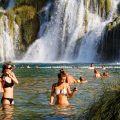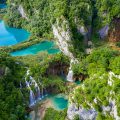River Canyoning: The Wildest Way to Explore Nature’s Hidden Heart
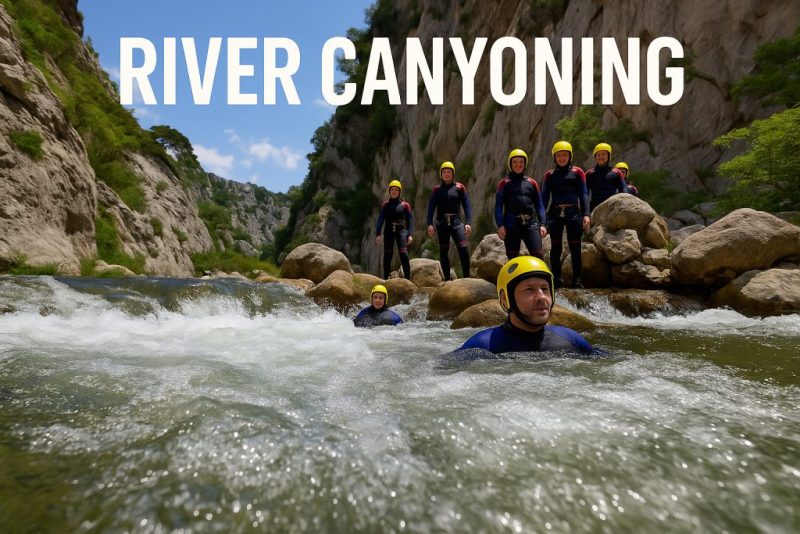
Discover the thrill of river canyoning — swim, slide, rappel, and explore wild gorges on one of nature’s most exciting adventures. Gear up and dive in!
Imagine plunging into pools of crystalline water, sliding down natural rock chutes, rappelling beside roaring waterfalls, and wading through secret gorges where few have ever stepped. This isn’t just a hike or a swim—it’s river canyoning, a pulse-racing blend of adventure, nature, and pure, untamed joy.
🧗♀️ What Is River Canyoning?
River canyoning—also known as canyoneering—is the sport of exploring narrow river gorges by a mix of walking, swimming, jumping, sliding, climbing, and abseiling.
Think of it as nature’s obstacle course, carved by water over millions of years, where the river itself becomes your path.
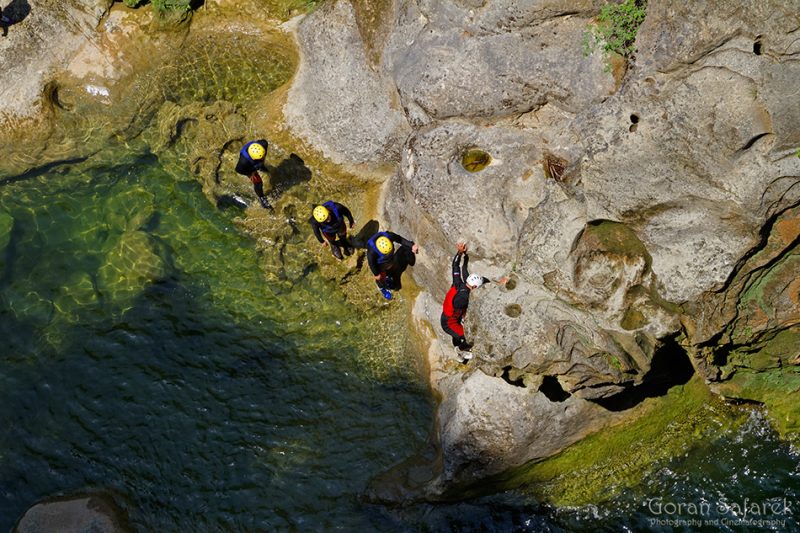
Unlike white-water rafting, canyoning often involves descending the canyon—navigating waterfalls, pools, and chasms as you go. Each canyon is a world of its own, shaped by geology and water, echoing with birdsong or the thunder of cascades.
A Brief History of Canyoning
From survival to sport — the evolution of wild water exploration.
Canyoning, as we know it today, is a relatively young adventure sport — but its roots go deep into the human story.
Long before it was about thrills, navigating canyons was a necessity. In many mountainous regions of Europe, Asia, and the Americas, remote gorges were crossed in search of water, firewood, lost livestock, or hidden routes between valleys. The knowledge of how to climb, swim, and scramble through wild terrain was part of survival.
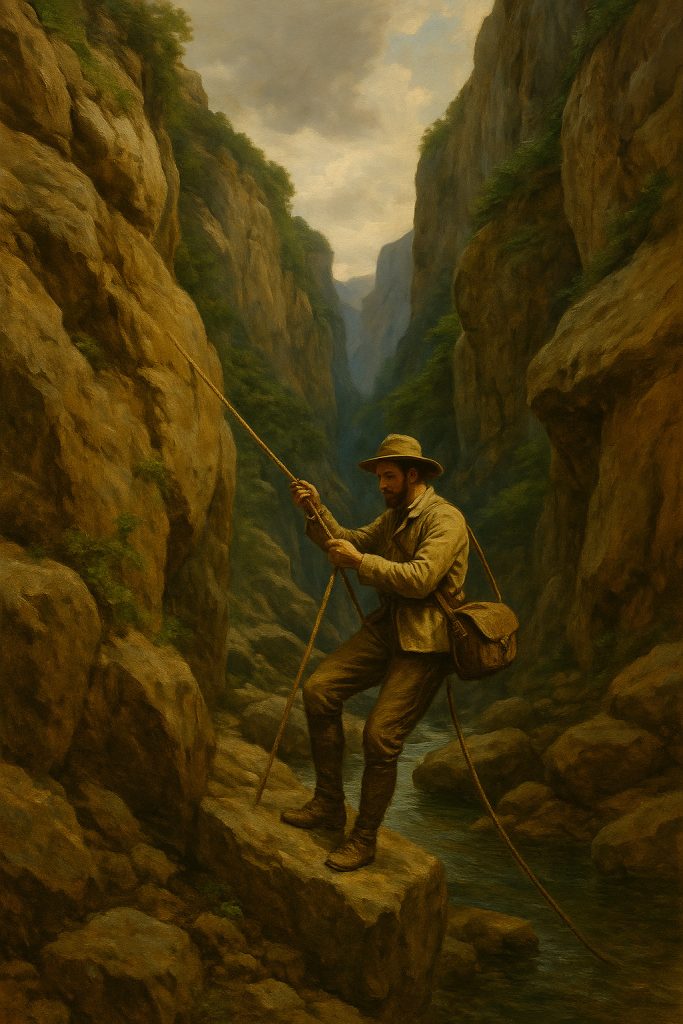
🏔️ From Explorers to Adventurers
The modern sport of canyoning began to take shape in late 19th-century France, particularly in the Alps and Pyrenees, where early geographers, hydrologists, and speleologists began descending gorges to map rivers and caves. These pioneers used rudimentary ropes, boots, and local knowledge — often risking their lives to push the boundaries of the known world.
By the 1970s and 80s, as climbing gear and waterproof equipment improved, a new generation of thrill-seekers began entering canyons not for science, but for fun. Canyoning became popular in France, Spain, Switzerland, and later New Zealand, the U.S., Australia, and Southeast Asia.
🌍 A Global Sport
Today, canyoning is a recognized outdoor sport across six continents. From the deep gorges of Zion National Park in Utah, to the volcanic ravines of Madeira, the tropical waterfalls of Bali, and the karst canyons of the Balkans — every region brings a unique flavor to the experience.
It’s still evolving, blending elements of climbing, swimming, diving, and survival — but at its heart, canyoning is about connecting with the rawest forms of nature, one exhilarating step at a time.
Types of River Canyoning
1. Classic Canyoning
This is the standard style and what most tours offer. It’s a mix of hiking, swimming, sliding, jumping, and abseiling down a river gorge. You’ll follow the natural path of water through narrow passages, waterfalls, and rock pools — ideal for first-timers and thrill-seekers alike.
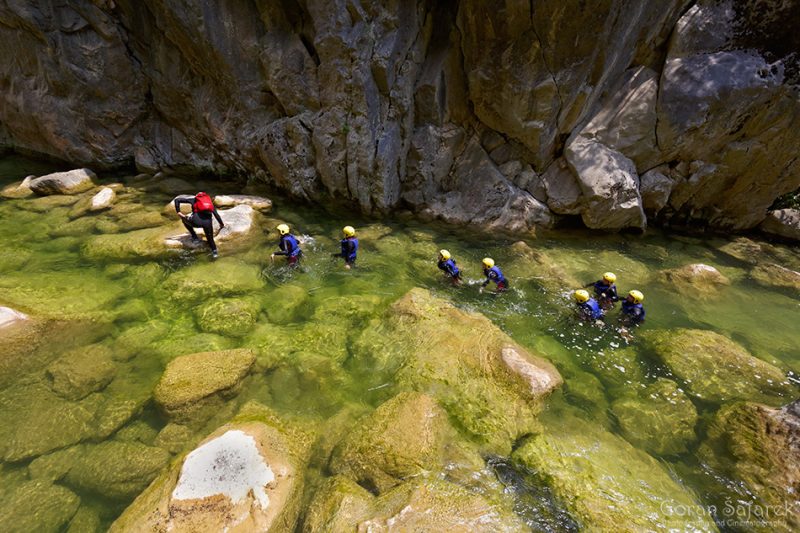
🧗♂️ Expect: Waterfalls, vertical descents, natural water slides, deep plunge pools.
2. Aquatic Canyoning
A more water-heavy version of canyoning, this type focuses on canyons where swimming is the main mode of travel. It’s often done in warmer regions or during the high-flow season. Ideal if you love being fully immersed in water (literally!).
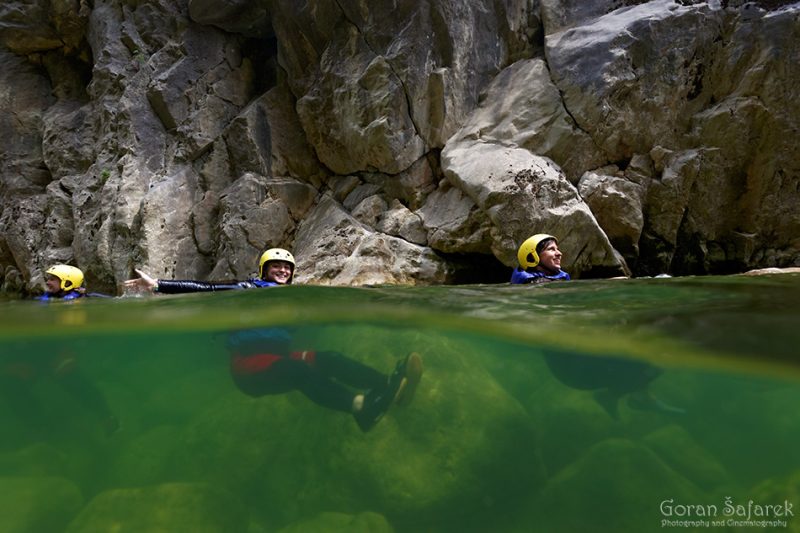
🌊 Expect: Long swims, floating sections, high jumps, underwater caves.
3. Dry Canyoning (Non-Aquatic)
Done in arid or seasonal canyons with little to no water. Instead of swimming, you’ll be scrambling, rappelling, and climbing. Often practiced in desert regions like Utah or Spain, it’s more technical and climbing-focused.
🏜 Expect: Rope work, high walls, tight slots, dry waterfalls — but no swims.
4. Vertical Canyoning (High Drop)
Focused on big descents, this is for those who crave adrenaline. You’ll rappel down multiple high waterfalls (some over 50m/160ft), and sometimes jump from cliffs into narrow pools. It’s a step up in both technical skill and mental focus.
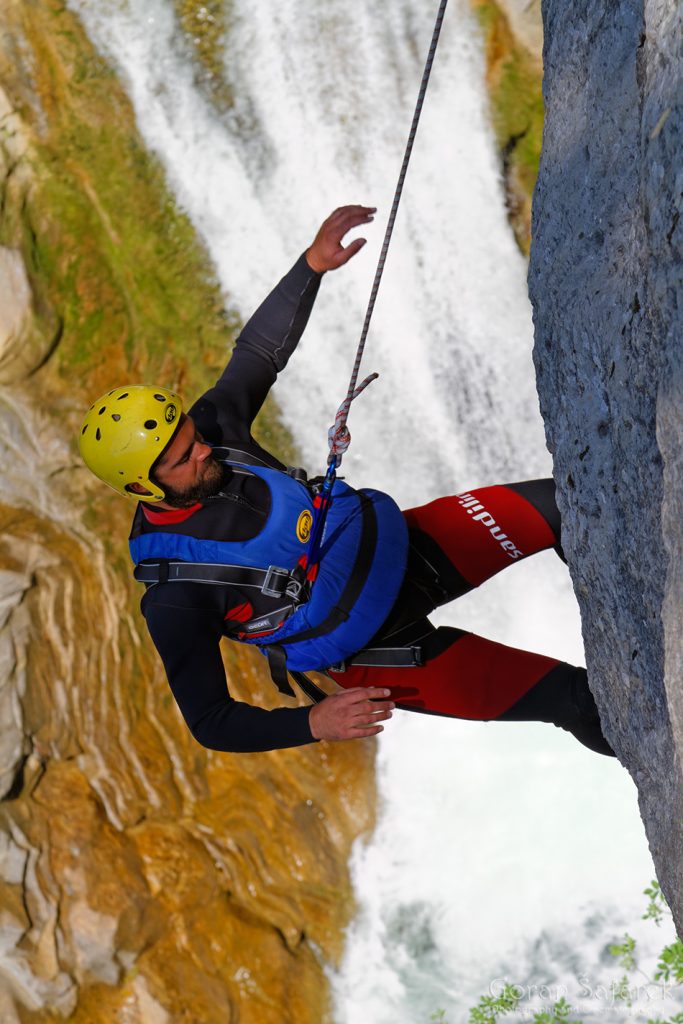
🧗♀️ Expect: Multiple abseils, high exposure, misty drops, and epic views.
5. Exploratory or Wilderness Canyoning
This is the expedition-style canyoning, often in remote or lesser-known areas, and might include multi-day journeys through untouched gorges. There’s often no marked route, and guides must navigate and assess risks in real-time.
🏕️ Expect: Camping, long hours, raw nature, total immersion in the wilderness.
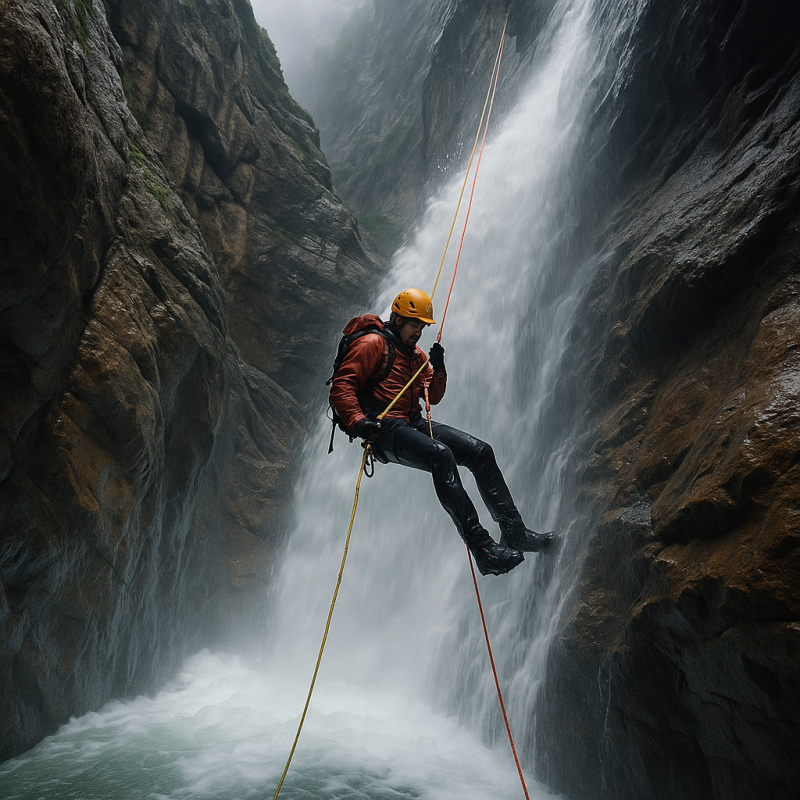
6. Extreme or Technical Canyoning
Reserved for advanced canyoners only. These routes involve difficult access, complex rope systems, high water flows, and intense exposure. Often requires experience in rescue techniques, anchor setting, and weather reading.
⚠️ Expect: Class V terrain, unpredictable conditions, and serious training.
🔥 Bonus: Urban Canyoning?
While not river-based, urban canyoning is an emerging niche where adventurers descend storm drains, underground canals, or city gorges. It’s part exploration, part rebellion — but very niche and usually unofficial.
Whether you’re floating through a crystal-clear jungle pool or rappelling beside a roaring 40-meter waterfall, there’s a canyoning style for every level of adventure.
Where to Try It
River canyoning is a global thrill, found wherever mountains cradle wild rivers. From alpine gorges to tropical ravines, every region offers its own twist — shaped by geology, water, and culture. Here are some of the world’s most breathtaking canyoning destinations:
🇫🇷 Verdon Gorge, France
Often called the “Grand Canyon of Europe,” the Verdon is a canyoning dream. Towering limestone walls, turquoise glacial waters, and thrilling abseils down waterfalls make this spot in Provence a classic. Ideal for both beginners and seasoned adventurers.
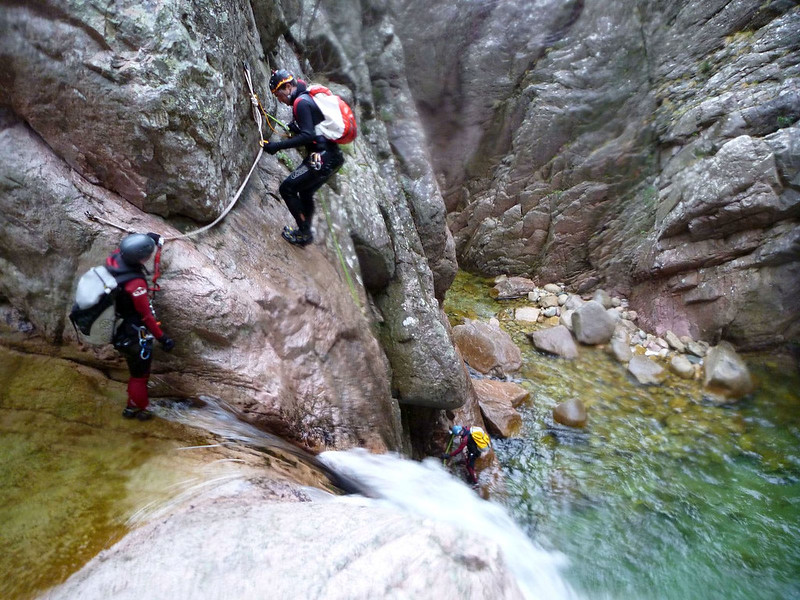
🇸🇮 Soča Valley, Slovenia
The Soča River is a jewel of the Julian Alps — with emerald-green waters so clear they look surreal. Here, you’ll slide through narrow rock corridors and leap into deep pools carved by centuries of snowmelt. A fairytale for those who crave adrenaline and beauty in equal measure.
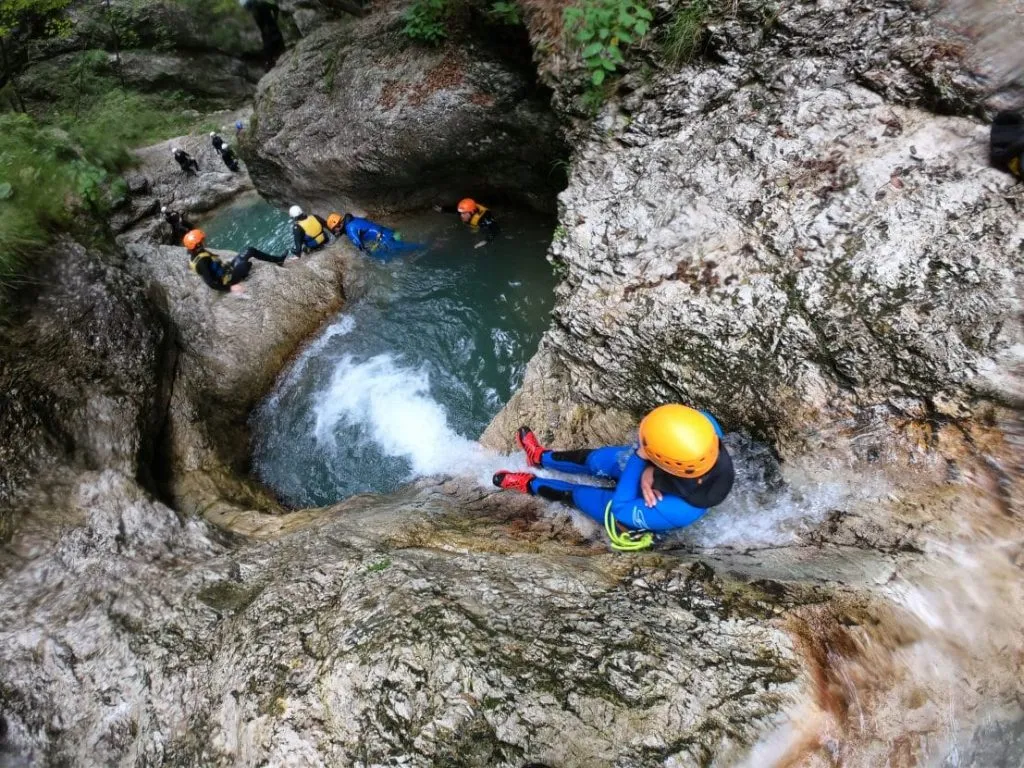
🇵🇹 Madeira Island, Portugal
This subtropical volcanic island in the Atlantic is home to lush, jungle-like canyons, towering ferns, and steep basalt cliffs. Canyoning in Madeira feels like plunging into a prehistoric world — with warm rivers, mossy boulders, and vines hanging from the rocks.
🇨🇭 Interlaken, Switzerland
If you want canyoning with a chill (literally), Interlaken delivers. Set between snowy peaks and glacier-fed rivers, its icy streams and powerful waterfalls make for high-intensity routes with epic views. Professional guides and excellent safety standards make it a top pick for serious canyoners.
🇮🇩 Bali, Indonesia & 🇨🇷 Costa Rica
Prefer your canyoning tropical? In Bali and Costa Rica, you’ll descend through steamy rainforests, waterfall after waterfall, surrounded by lush canopies, vines, and the calls of jungle wildlife. The water’s warm, the vibes are wild, and the views are unforgettable.
🇭🇷 Cetina River, Croatia
Just inland from the Adriatic coast, the Cetina River near Omiš offers a dramatic mix of sheer cliffs, emerald water, caves, and waterfalls — most famously the 50-meter Gubavica. This is canyoning at its wildest, blending adventure with Mediterranean charm.
Explore river canyoning on the Cetina River.
These are just the highlights. From the rugged deserts of Utah to the ancient valleys of Nepal, river canyoning is your passport to landscapes few ever see — and fewer still dare to cross.
What Gear Do You Need?
The beauty of river canyoning? You don’t need to arrive like an expert mountaineer. Most of the essential equipment is provided by your tour operator, carefully selected for safety and comfort in wild, wet environments.
Here’s what you’ll be outfitted with — and what to pack yourself for the ultimate experience:
✅ Provided by the Tour Operator
- Wetsuit – Your second skin in the canyon. It keeps you warm in cold, spring-fed rivers, protects against scrapes, and adds a little padding when sliding down rocky chutes.
- Helmet – Vital for protecting your head as you navigate slippery rocks, tight crevices, or unexpected tumbles. Safety never looked so adventurous.
- Life Jacket – Even strong swimmers benefit from the buoyancy and confidence this adds, especially in swirling pools or during longer floats.
- Harness & Ropes – Used for abseiling (rappelling) down waterfalls and steep drops. These are your lifeline—literally—and your guides will teach you how to use them safely.
- Dry Bag (sometimes) – A small waterproof pouch to keep essentials like snacks, phones, or medications safe and dry. Some tours supply them, others recommend you bring your own.
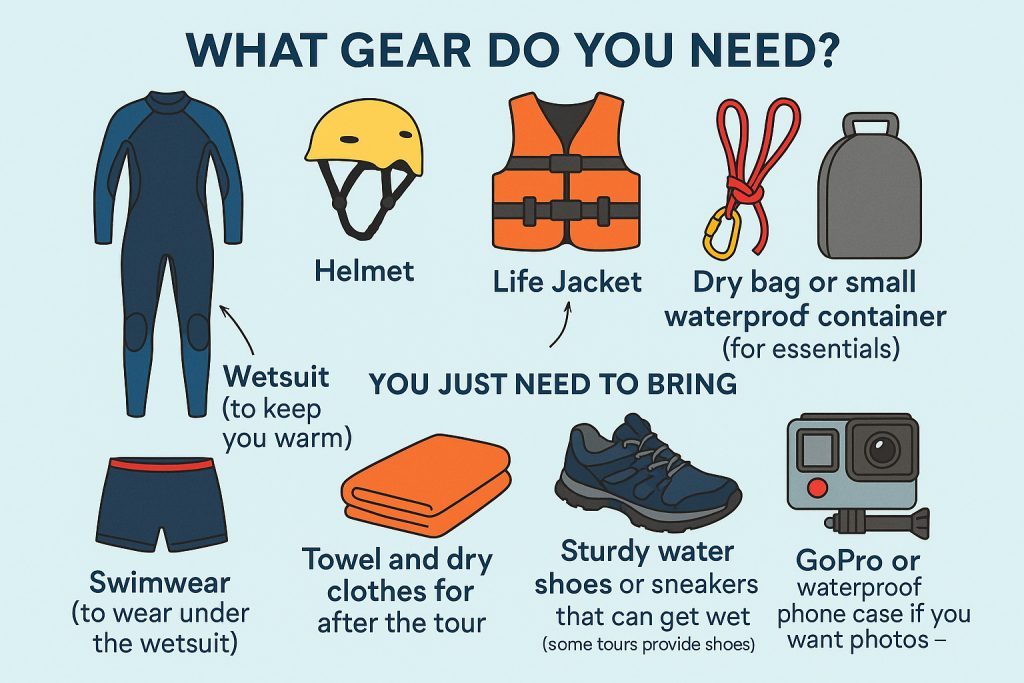
🧳 What You Should Bring
- Swimwear – Wear it under the wetsuit. Opt for something snug that won’t shift around while climbing, swimming, or sliding.
- Sturdy Water Shoes or Sneakers – Your feet will thank you. Good grip is essential on wet, mossy rocks. Some tours provide shoes, but check ahead — and avoid flip-flops at all costs.
- Towel & Dry Clothes – There’s nothing better than slipping into warm, dry clothes after your canyoning adventure. Pack them in a separate bag to leave at the base or shuttle.
- GoPro or Waterproof Phone Case – Capture the magic—IF your guide gives the green light. Many tours allow you to bring waterproof action cams (secured with a chest mount or head strap), but others may prefer to handle photography for safety reasons.
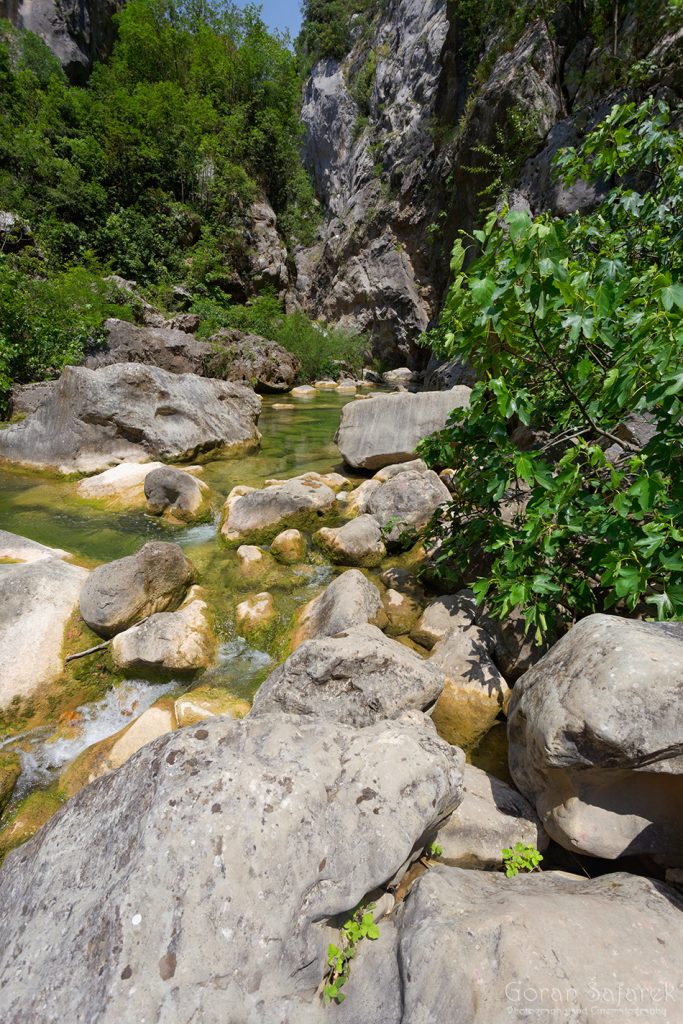
💦 What to Expect on the Adventure
📍 Arrival & Safety Briefing
After meeting your guide, you’ll gear up and go over safety techniques. Expect a short hike to the canyon’s entrance—often with panoramic views.
🌊 Into the Canyon!
As you enter the gorge, the sound of water surrounds you. You might:
- Slide down mossy rock chutes into plunge pools
- Leap from ledges into deep water (optional!)
- Walk or swim through narrow gorges
- Rappel beside waterfalls
- Crawl through caves or float beneath overhangs
It’s a full-body experience. Some moments feel meditative—floating between high stone walls. Others spike your adrenaline.
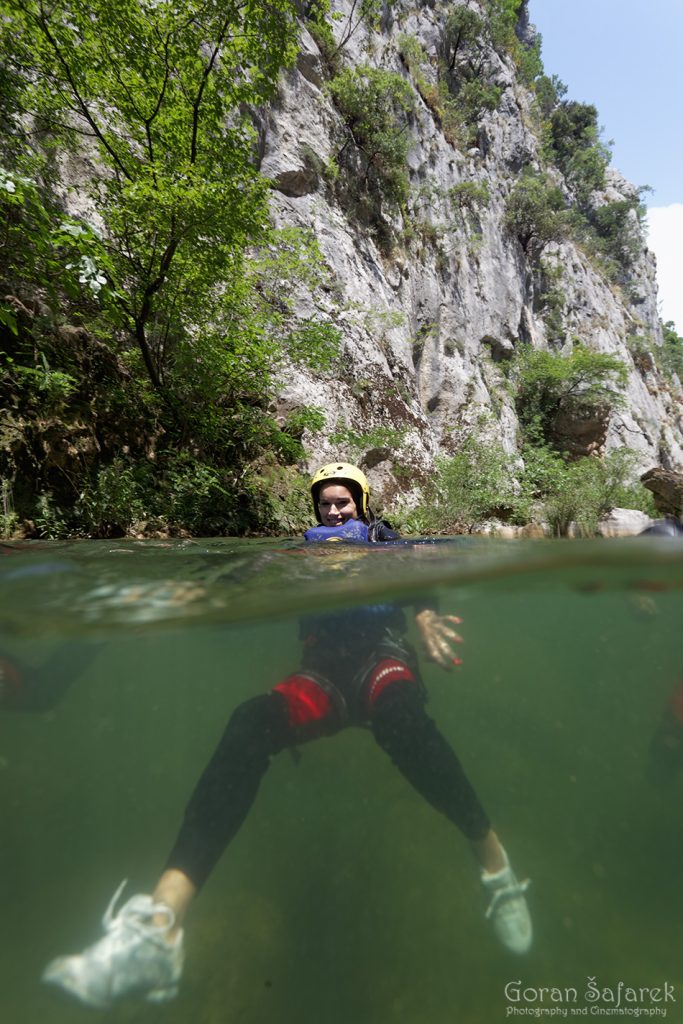
🏞️ The Scenery
Every step reveals something new:
Ferns growing from canyon walls. Sunlight pouring in from above. Waterfalls cascading into echoing pools.
And unlike crowded tourist spots, you’ll often have this natural wonder all to yourself.
🤿 Is It Safe?
Yes, when done with professionals and proper gear.
Your guides are trained in swiftwater rescue and rope techniques, and they’ll adapt the route to your fitness level. If you’re unsure about jumps or abseils, most routes offer alternatives.
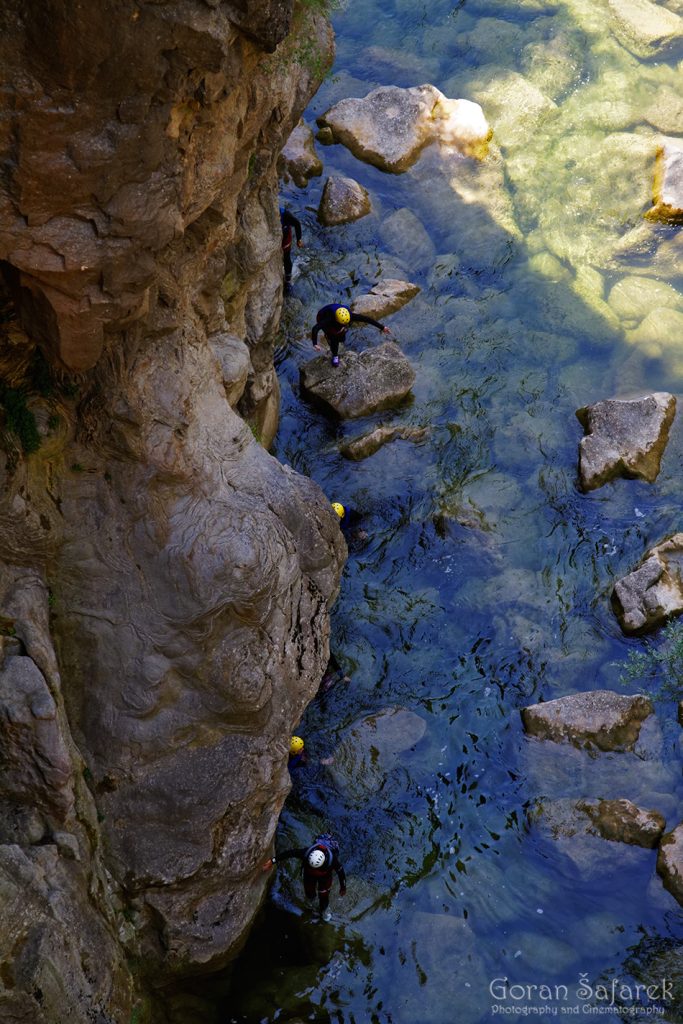
🏃♀️ Who Can Try River Canyoning?
You don’t need to be a pro athlete—just reasonably fit, comfortable in water, and open to adventure. Routes vary from beginner-friendly to extreme, so check the difficulty before you go.
It’s perfect for:
- Nature lovers
- Adrenaline seekers
- Travelers wanting something off-the-beaten-path
- Groups, couples, or solo adventurers
🌟 Why You’ll Never Forget It
Canyoning awakens a primal thrill—the feeling of being truly in the wild, not watching nature but moving through it.
You’ll climb, splash, laugh, maybe scream a little—and come out the other side with mud on your face, stories to tell, and a glow of accomplishment.
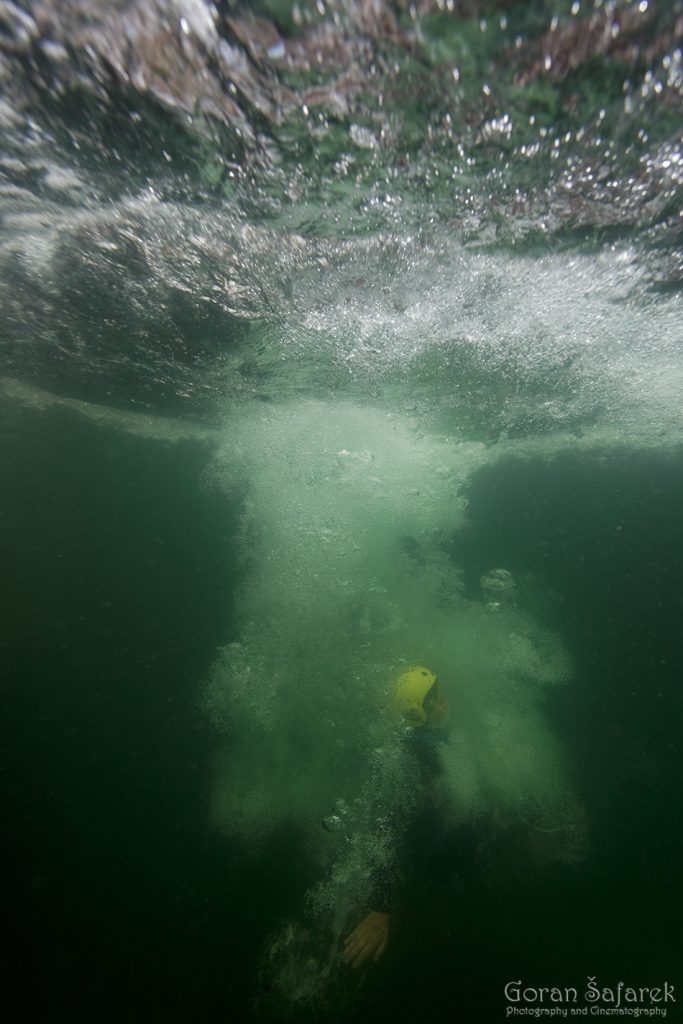
🧭 Quick Tips Before You Go
- Book with certified guides only!
- Don’t bring valuables (unless they’re waterproof and secured).
- Check weather conditions—heavy rain can make canyons dangerous.
- Wear sunscreen even if it’s cloudy.
- Hydrate well and bring your sense of adventure!
Ready to dive in?
Whether you’re leaping into a pool beneath a waterfall or drifting silently between high canyon walls, river canyoning is a reminder that the world still holds wild, wonderful places—and that you’re brave enough to explore them.
